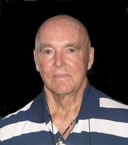Statins and Mitochondrial Damage - Conclusion
 By Duane Graveline MD, MPH
By Duane Graveline MD, MPH
Statins and Mitochondrial Damage Part 11 of 11
Research literature is now replete with reports of mitochondrial mutations associated with the aging process, many of the chronic diseases of aging, neurodegenerative diseases such as ALS and Parkinson disease and even many cases of autism.
The underlying mechanism is oxidative damage - the consequence of energetic radicals on the adjacent mitochondrial DNA strands. Now we find that statins affect mitochondrial DNA in the same manner by their inhibition of both CoQ10 and dolichols. The end result is premature aging along with its often associated weakness, incoordination and faulty memory as well as increased numbers of neurodegenerative diseases.
The inevitable impairment of CoQ10 synthesis by statin drugs allows excess oxidative damage, and the similar inhibition of dolichols disrupts the DNA error correction process with the result that not only do statins cause increased DNA damage, they also prevent its prompt repair.
My first book, LipitorTM, Thief of Memory, was focused on the amnesia, confusion, disorientation and forgetfulness caused by the excessive lowering of brain cell cholesterol by powerful statin "reductase inhibitors". Then I discovered that all statins were involved, not just LipitorTM, and that the resulting damage was much broader than cognitive loss.
Reductase inhibitors were blocking the entire mevalonate pathway and therefore inhibiting such valuable biochemicals as dolichols and CoQ10, and others, causing widespread side effects ranging from nerve and muscle damage to personality and emotional change, and even such neurodegenerative illnesses as ALS.
This is when I wrote my second book, Statin Drugs Side Effects. It was while researching the literature for reasons for the permanence of these adverse reactions that I discovered mitochondrial damage to be the most likely explanation for the permanence of such effects as peripheral neuropathy and myopathy.
This led me to my third book, the Statin Damage Crisis with my emphasis on broad use of nutritional supplements, those factors such as CoQ10, L-carnitine, magnesium, selenium and essential fatty acids that research proved was vital to mitochondrial maintenance.
Now I have learned that the oxidizing tendency of oxygen in the air we breathe with its production of highly energetic radicals from our foodstuffs has necessitated the evolution of a powerful anti-oxidant system to minimize the oxidative damage suffered by our tissues and, more importantly, our mitochondrial DNA.
The use of statins has resulted in compromise of the vital CoQ10 and dolichol elements of our antioxidant system, resulting in seriously increased oxidative damage and mitochondrial DNA mutations. The logical consequence of this is mitochondrial failure - insufficient mitochondria to supply the energy needs of the cell. The cell must die and with sufficient cell death comes tissue failure.
So if this is a nerve cell we have lost it and perhaps thousands more helping to explain why so much of the statin damage is permanent. The same thing holds for muscle cells. With sufficient loss of muscle cells we permanently lose muscle strength. Same thing for the pancreas. With sufficient loss of pancreatic cells and their insulin producing islets of langherhan, pancreatic failure and permanent diabetes results.
This helps greatly to explain why coQ10 does not help in some cases. Ultimately we have premature aging and the progressive development of such chronic conditions of aging as muscle weakness, burning pain, faulty coordination and failing memory - exactly the clinical picture we are seeing in tens of thousands of statin users.
This revelation is far too important to serve with the single chapter in my book, Statin Damage Crisis, and has made my fourth book, The Dark Side of Statins, mandatory. We never should have been taking statins without also taking CoQ10. Much of this could have been prevented had we but known. The drug companies knew.
Duane Graveline MD MPH
Former USAF Flight Surgeon
Former NASA Astronaut
Retired Family Doctor
Updated September 2013






